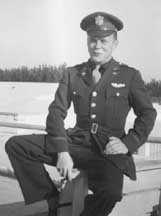
World War II Veteran Adrian Vandertang of Colby Street in Spencerport, had a story about two of his friends who are both in their 80s and also veterans of World War II. He phoned Westside News Inc., publishers of Suburban News and Hamlin-Clarkson Herald, asking for someone to write it. Given the times in which we are living and this amazing story of Leslie Smith and Charles Smith, it seemed important to share the story with readers. Both Les Smith and Chuck Smith grew up near each other in western Monroe County. Although they share a surname, they are not related by blood … unless you consider all that was shed during World War II in which they both served. Chuck says, "When we were young, Les and I lived less than one mile apart, and we started school in the one-room District 12 schoolhouse (which was) on the corner of Chambers Street and Vroom Road." Both attended area high schools and then both joined the service, where their experiences in the war were remarkably similar. In January 1942, Chuck entered the Army Air Corps (now called the Army Air Force) as an Aviation Cadet and trained to fly. "I met a girl in Sarasota," he says, "and we were married on March 3, 1943. My orders came through a couple of weeks later to proceed to New York City for embarkation. My parents came down and met us at the station. I was able to introduce them to Georgia, but I had to go immediately to the port and did not see any of them for nearly two-and-a-half years." Les also enlisted in the Army Air Corps on July 3, 1942 "with the hope of training to be a military pilot." After intense training he "went to Scott Field in Illinois to pick up our B-17 to fly across the Atlantic. We took off from Newfoundland on October 14, 1943 for a twelve hour flight to Scotland." Both men were also shot down and taken prisoners by the Germans. Les says, "On December 11, 1943, I was hit in the back part of the plane by an air-to-air rocket that killed four of the crew members, and destroyed our controls. German fighters then set the plane on fire and six of us in the forward part of the plane bailed out. We all landed in Holland and were immediately picked up by German soldiers. Then it was the routine procedure; to Dulag Luft in Stuttgart, Germany for solitary confinement and interrogation, and when they had accumulated enough for a few box cars full, it was off to a Stalag for the duration." "At this time most of the captured airmen were being sent to Stalag Luft 1 at Barth on the Baltic. We arrived there December 26, 1943, and were given quarters by some British personnel who had been there since 1939. We soon fell into the camp routine - roll call twice a day, German rations once a day and a Red Cross food parcel once a week. We had some sports equipment, some musical instruments and a small library. All of this was furnished by the American Red Cross. "This lasted for almost a year-and-a-half for me," Les said. "On April 30, 1945 we got up in the morning and the German guards were gone. The Russian army arrived the next day. In two weeks, Stalag Luft 1 was empty of its ten thousand men. On June 11, 1945, I set sail for the USA aboard a sister ship to the Queen Mary. Needless to say, the amenities had been removed to make room for twenty-five hundred men." Once home Les went to Fort Dix and received his honorable discharge. When Chuck left the United States in 1943, he went to North Africa. "At a REPO (replacement depot) just south of Casablanca, my three buddies and I volunteered for a fighter bank group that was being formed in Moraco," he says. "We would be flying the A36 (P51A equipped with dive brakes to permit a vertical dive). After some operational experience with the plane - can't call it training, since the plane was unique and no one had much experience with it - the group prepared for the invasion of Sicily. We moved to a base in Gela, Sicily." "On July 24, 1943, I took an AA hit that forced me to bail out. I landed in the water about a half-mile off shore from the harbor where we had been bombing the shipping. About 30 minutes later a patrol boat picked me up. I was taken by truck to POW holding camp near Naples, Italy. Then by train - boxcars packed with POWs, mostly paratroopers and airborne - to the Dolag Luft at Frankfort on the main solitary confinement and interrogation. Then again (we went) by train in boxcars to Stalag Luft III, Sagan, Germany." "On January 1945, we went by foot about 90 miles to Sprenberg, Germany where we were loaded on boxcars and sent to Stalag VII near Munich. On April 29, Patton's Third Army came through and I became a RAMP (Recovered Allied Military Personnel.) In June of 1945 I went back to New York City." Both friends returned to the United States in June of 1945. Both friends still live in western Monroe County between Spencerport and Brockport within two miles of each other. And they never saw each other throughout the war. |

